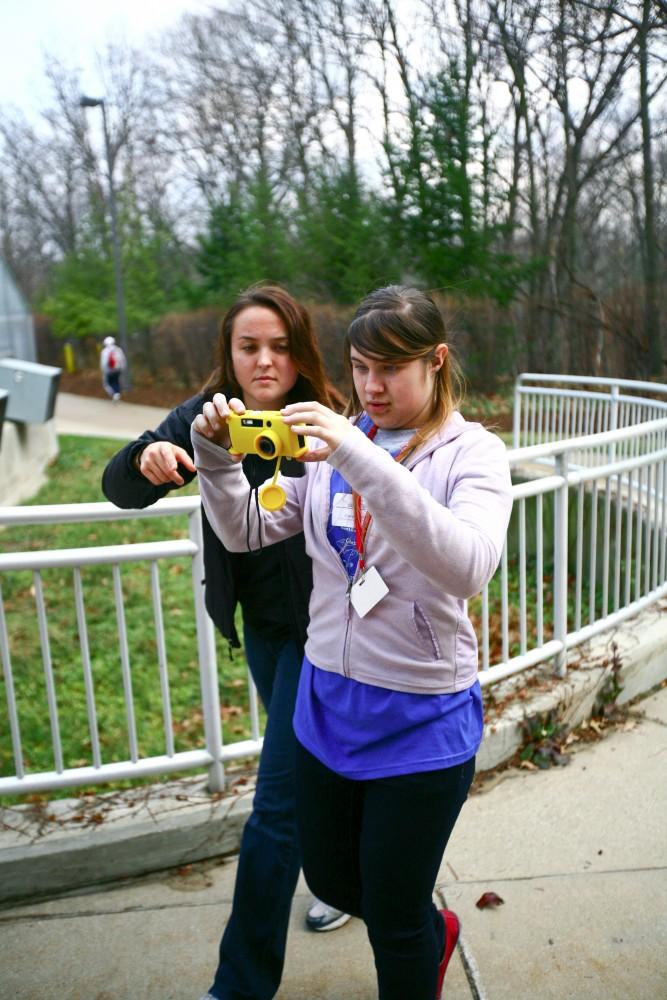GIS Day brings middle

Students particpating in GIS day take photographs using a gps camera
Nov 18, 2010
Spearheaded by the Environmental Systems Research Institute at National Geographic, GIS Day (which stands for geographic information systems) first came to GVSU in 2001. With the exception of fall of 2009, the geography department has put on GIS Day for middle school-aged children since then, said Edwin Joseph, associate professor of geography and planning.
“We have a number of schools – mostly the minority kids from the inner city who have never had a visit to a college or university – and they had to get a chance to see what’s possible,” Joseph said.
Students ranging from sixth to eighth grade were brought to campus for the day to learn what GIS Day volunteer Bekka Seelbach describes as the “deeper side of geography.”
“It gives them a broader perspective on the world, I think that’s why it is so important,” Seelbach said. “They keep it very general when they teach geography in middle school, and I think it helps to show more perspective of the entire world – it gets them to reach out to everybody.”
Joseph said GIS day promotes the use of geographic tools and techniques that students otherwise would not have gotten a chance to explore. Exploration, he added, is valuable to more that just the geographers.
“GIS as a tool to explore and to learn and to understand the world is something that we should really take seriously because it is very good for discovering, very good for analysis, good for research,” Joseph said. “It can be used in biology, it can be used in criminal justice – it’s not just for learning about where things are, but it’s learning about how things interact, it’s about how you can predict changes in the environment.”
Joseph first fell for geography when using GIS and GPS while studying agriculture, which is another way that the skills used in GIS day can be practically applied, he added.
Seelbach, who is a geography major preparing to graduate, said she appreciates the practicality of the field and thinks it is important that middle schoolers understand that aspect as well.
“They learn a little bit in middle school, (and) maybe they don’t fully understand it, but by showing them what we do in college we are getting them acquainted with what you can do with geography,” she said. “It’s such an interdisciplinary topic. It incorporates many different subjects – you can get technical with it as far as computers go, but you can also do physical sciences with it or even go from more of an anthropology or cultural angle.”
The students, however, brushed aside all technicalities and practical application for a much simpler appreciation. A sixth grader from CA Frost Environmental Science Academy summed up their day while clinging to the silver pendulum outside of the Padnos building.
“I would love to come to college to do all of this GIS stuff,” she said.

























